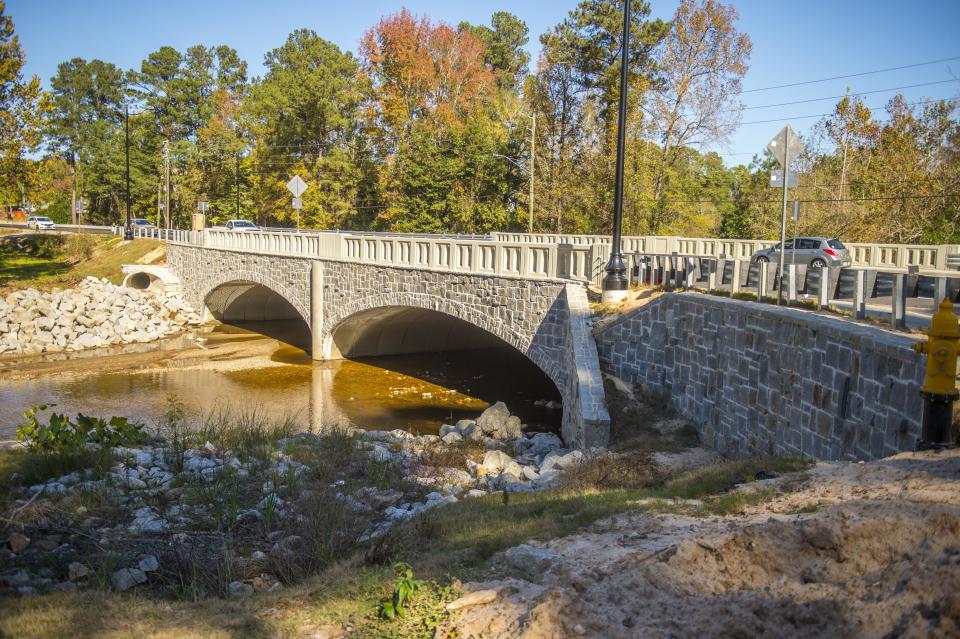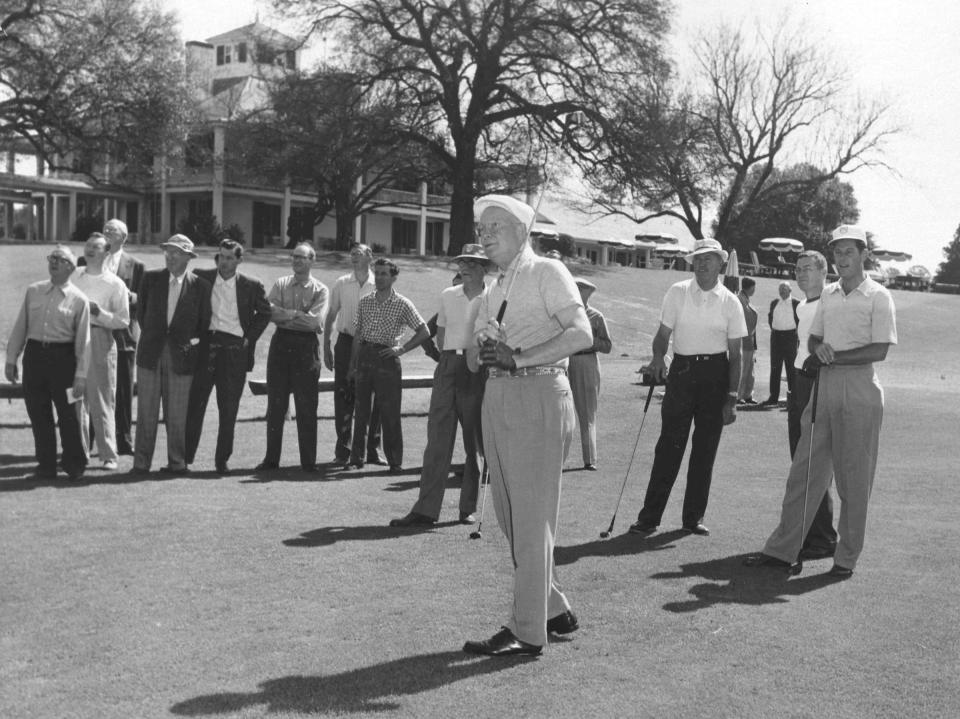The Masters: Rae's Creek comes and goes quickly, but has left a long trail of heartbreak
If John Rae hadn’t been such a mover-and-shaker, Masters history would include many chapters on would-be champs whose dreams drowned in Kenyon’s Creek.
Huh?
Yes, Kenyon’s Creek, a meandering 10-mile stream that once flowed gently across the undeveloped landscape and eventually into the Augusta Canal, which (then and now) fed into the Savannah River. It now feeds into Lake Olmstead, thanks to a late-1800s dam project.
In 1734, exactly 200 years before the first Masters Tournament, John Rae, an Irish trader, came west and settled in Augusta. Along with establishing a cattle farm, trading post and large homestead overlooking the river, Rae started a ferry service.
By the time of his death in 1789, he’d become such a prominent resident that “Kenyon’s Creek” had become Rae’s Creek. Today it still wanders its old 10-mile path, but nowadays it passes under a couple of main thoroughfares, around neighborhoods, behind a swim-and-raquet club, and eventually dries out west of town near Interstate 20.
Masters Anniversaries: From Bubba to Tiger to Jack ... all the way back to Byron, some Masters anniversaries
Will Tiger play?: The Tiger Tease is in full bloom ahead of Augusta National's Masters | Ken Willis
Where's Phil?: KEN WILLIS: Mickelson's Masters no-show will be the first of its kind

Of those 10 miles, without question the most famous stretch of Rae’s Creek cuts across the bottom of the old Fruitland nursery, a 365-acre property sold in the early 1930s to a group headed by golf legend Bobby Jones.
Good fortune often found Bobby Jones, and what good fortune it was that the purchased property stretched just beyond Rae’s Creek on the lowest part of the grounds.
That allowed Dr. Alister MacKenzie, the course architect, to plant a green between the creek and southern property line, which in turn forced golfers to deal with that creek, which in turn led to decades of great relief but also, what we remember most, heartbreak.
BACKYARD MASTERS: Can't go to the Masters? Ormond Beach couple bring it to their backyard.
GIVE A FINGER?: So, you wanna play Augusta National? Let's negotiate the terms | KEN WILLIS

Originally it was the third hole, but prior to the second Masters in 1935, the nines were reversed and the third became the 12th.
Rae’s Creek is at its widest inside Augusta National grounds — 60 feet wide, four feet deep. It’s surrounded by golf’s most colorful backdrop — blooming azaleas and dogwoods, guarded by majestic pines that look protective but, in dark moments, wreak havoc on wind patterns and sometimes make that 12th-tee club decision more of a guess.

That whole southern section of the course, with its natural beauty, eventually earned a proper label — Amen Corner. As serene as that sounds, it’s the not-so-holy water fronting the 12th green that snaps golfers out of any temptation to relax and enjoy the views.
In case you want to sound smart around friends this week, here are some other tidbits about Mr. Rae’s creek.
• Rae’s Creek branches out into 74 tributary streams along its 10 miles. The narrow creek running along the left side of No. 13 and across the front of its green is a Rae’s Creek tributary, though many mistakenly refer to it as Rae’s Creek.
Some years, it pays quite a tribute, gobbling its own share of misplayed shots and dashing the hopes of contenders.
• The pond left of the No. 11 green was once fed by Rae’s Creek, before a dam was built in 1950.
• Augusta National lore includes the story of former President Dwight Eisenhower, a club member, hitting his tee shot on No. 12 into Rae’s Creek, where it nestled atop a jut of sand sticking above the water. Urged to wade in toward the sandbar and play the shot, Ike quickly sank to his knees in mud and had to be rescued by two Secret Service agents.
• “Every putt breaks toward Rae’s Creek.” Toss out that old gem and prepare to do some splainin’. Here goes …

The southern tip of Augusta National is the lowest part of the 365 acres, 175 feet lower than the northern boundary. Where Rae’s Creek passes behind the 11th green is said to be the exact low point.
Therefore, natural forces create a pull toward Rae’s Creek and the 11th green. Putts breaking toward the north will break a tad less due to that pull. East-to-west putts that look straight might have a wee bit of pull to the south.
What do the longtime Augusta caddies call this phenomenon? Yes, “the pull.”
Example: In 1986, when Jack Nicklaus made the final birdie of his comeback (“Yes SIR!”), his 12-foot putt on No. 17 looked like it had an inch of break to the right, but Nicklaus suggested, “No, Rae’s Creek will keep it straight.”
He was right.
This is why many (or most) Augusta yardage books include a red dot on each green, indicating the direction of Rae’s Creek.
• The 12th tee doesn’t have the do-or-die feel of the No. 17 island green at TPC-Sawgrass. But with the traditional Sunday pin placement on the right side of the slightly angled green, a leader or contender’s temptation is mightily tested.
Aim at the pin but push it too far right, or maybe catch the ball a fraction off-center, you’ve lengthened the hole and invited Rae’s Creek to add another notch in its belt.

That’s why, without fail, you’ll see every golfer stand on that tee, staring at the tree tops, glancing over at the flag on the 11th green, looking down at the yardage book, back to the tree tops … hoping against hope he’ll get a clue for what the swirling breezes will do to his golf ball.
Occasionally, it ends badly, and you’ll see the golfer make that sad walk toward the penalty-drop area, wishing John Rae’s ferry would show up and take him upstream.
This article originally appeared on The Daytona Beach News-Journal: The Masters 2022: Rae's Creek is hardly holy water down at Amen Corner

